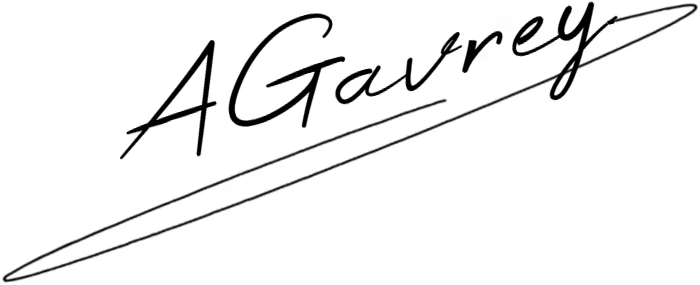Understanding Illinois (IL) Income Tax
Illinois, known as the Prairie State, is home to over 12 million residents. For those living and working in Illinois, understanding how the state's income tax system works is essential to ensure compliance and optimize financial planning. The Illinois income tax system is somewhat unique compared to other states in the U.S., primarily due to its reliance on a flat tax rate. This article will take a deep dive into Illinois income tax, explaining its key components, who is required to file, and how taxpayers can reduce their taxable income.
Illinois Flat Income Tax Rate
Unlike many states in the U.S. that have a graduated tax rate, where the tax rate increases as income rises, Illinois follows a simpler flat tax structure. Since 2011, Illinois has consistently imposed a flat tax rate of 4.95% on individual income. This rate applies to all income levels, meaning whether you earn $30,000 or $300,000, your income will be taxed at the same percentage. The flat tax rate simplifies the filing process but does not take into account the income disparities among taxpayers.
Illinois is one of a few states that use this flat rate system, making it both straightforward and contentious. Supporters argue that it simplifies taxation and reduces administrative overhead. Critics, however, claim that it places a heavier burden on low-income households, who end up paying a larger percentage of their income compared to higher earners in real terms.
Filing Requirements and Residency
If you live or work in Illinois, chances are you’re required to file a state income tax return. Even if you work in Illinois but live in another state, you may still have to file an Illinois return. The filing requirements for Illinois depend on your residency status:
Taxpayers must file their Illinois income tax return using Form IL-1040. This form is straightforward, mainly requiring information about your income, taxes withheld, and any credits or deductions you’re eligible for. For those who file federal taxes, the Illinois tax return aligns with much of the same information, making the process relatively simple.
Deductions and Exemptions
Although Illinois uses a flat tax rate, it does provide some relief in the form of personal exemptions. The personal exemption amount changes periodically to adjust for inflation, but in recent years it has been around $2,375 per person. This amount can be deducted from your gross income, reducing the taxable income you report to the state. In addition, taxpayers can claim exemptions for dependents, which further lowers the amount of income subject to Illinois tax.
Beyond personal exemptions, Illinois offers limited deductions. The state does not have a standard deduction or itemized deductions similar to those available on federal tax returns. However, Illinois allows taxpayers to deduct certain federal income tax payments and contributions to specific retirement savings plans, such as IRAs and 401(k)s, from their state taxable income.
Illinois Tax Credits
While Illinois does not offer many deductions, it does provide several tax credits to help reduce the overall tax liability for residents. Some of the most common credits include:
- Earned Income Tax Credit (EITC): This credit is available to low-income taxpayers who also qualify for the federal EITC. In Illinois, the state EITC is worth 10% of the federal credit, helping to reduce the burden on working families.
- Property Tax Credit: Homeowners can claim a credit for a portion of the property taxes paid on their primary residence. This credit is typically worth up to 5% of the total property tax paid during the year.
- Education Expense Credit: Taxpayers can claim a credit of up to $750 for qualified education expenses paid to schools in Illinois, including tuition and fees for K-12 education.
Illinois Income Tax Brackets and Calculations
The following table breaks down Illinois’s income tax rate along with some important tax data. The flat tax rate means that calculations are simpler compared to states with multiple tax brackets.
| Tax Type | Rate | Exemption Amount | Credits Available |
|---|---|---|---|
| Personal Income Tax | 4.95% | $2,375 per person | EITC, Property Tax Credit, Education Expense Credit |
| Corporate Income Tax | 7% | N/A | N/A |
Penalties and Interest for Late Payments
If you fail to file your Illinois state tax return or pay your taxes by the due date, you may face penalties and interest. The state imposes a late-filing penalty if you do not file your tax return by the deadline, which is typically April 15. The late payment penalty is usually a percentage of the unpaid tax balance, with additional interest accruing daily until the amount is paid in full.
There are also penalties for filing an inaccurate return. If the Illinois Department of Revenue determines that you underreported your income or claimed fraudulent deductions or credits, you could be subject to an additional penalty. The state takes tax evasion seriously and enforces these penalties rigorously, so it is crucial to ensure your tax return is accurate and complete.
How to File Illinois State Income Taxes
Filing your Illinois income taxes can be done in several ways. The most common method is through the state’s online filing system, known as MyTax Illinois. This platform allows residents to file their state tax returns, make payments, and track refunds all in one place. Taxpayers can also file their Illinois returns through third-party tax preparation software, which is widely available.
Regardless of the method you choose, it’s essential to file your Illinois tax return by the deadline to avoid penalties. If you cannot pay the full amount owed by the deadline, it is still important to file on time, as penalties for late filing are more severe than for late payments.
Evaluation of IQTaxHub
Pros
Cons

October 21, 2024 at 11:05 p.m.
October 21, 2024 at 11:22 p.m.

